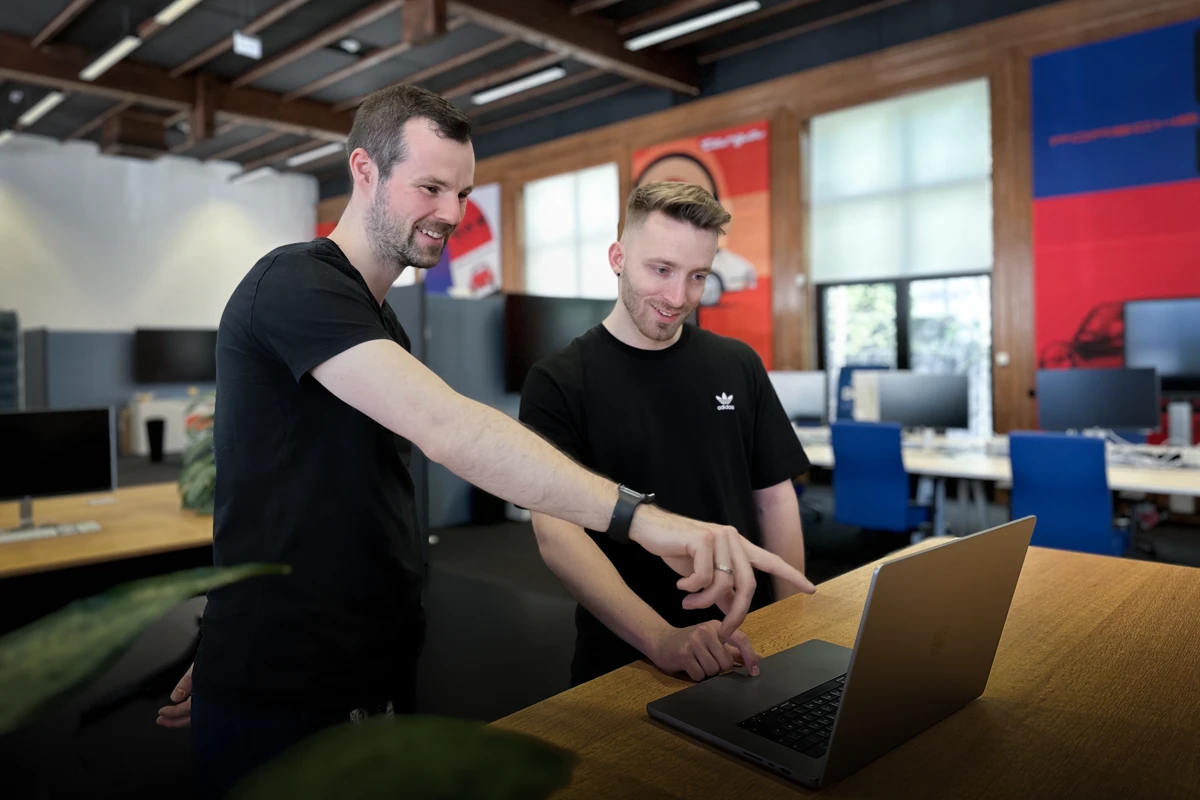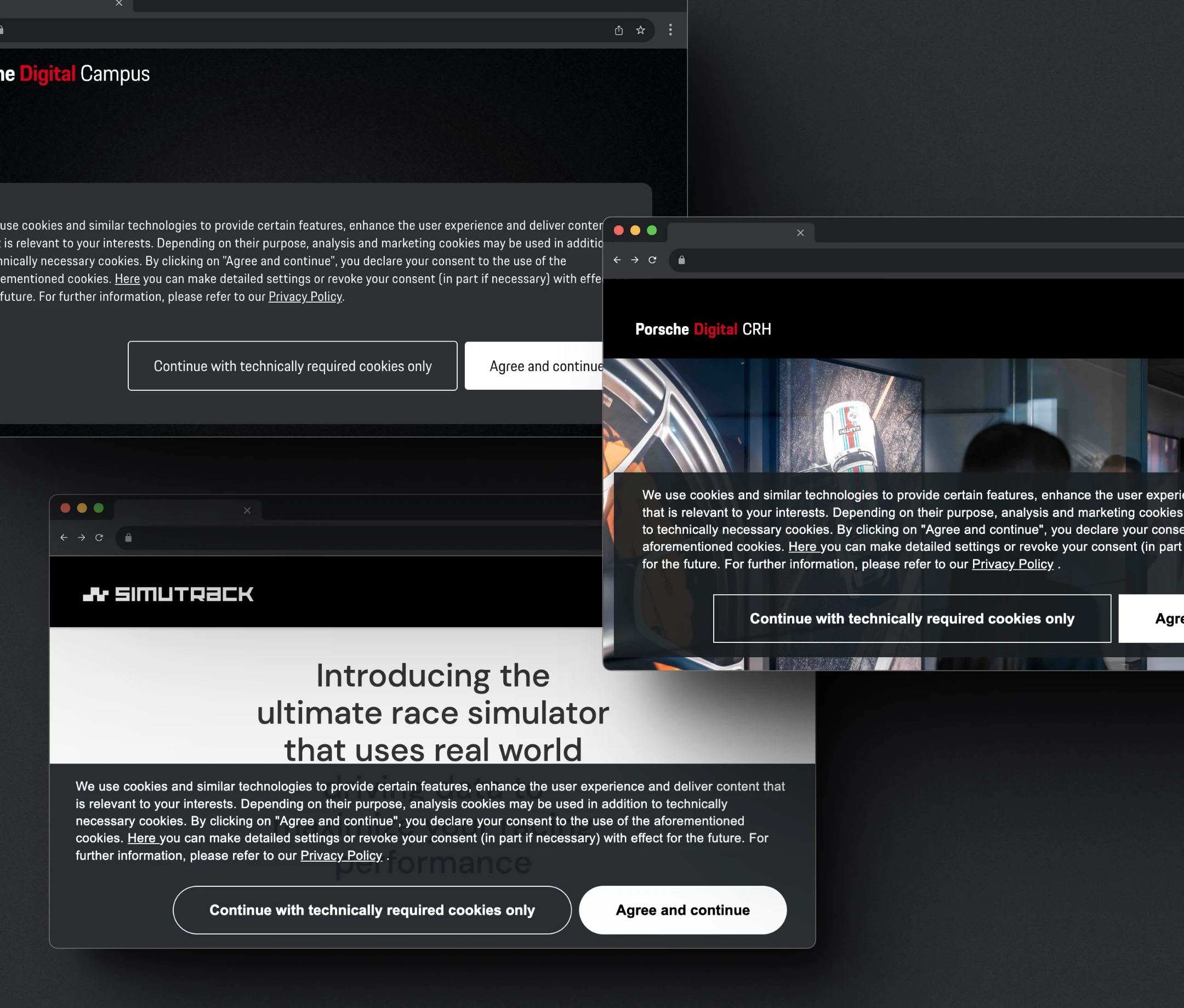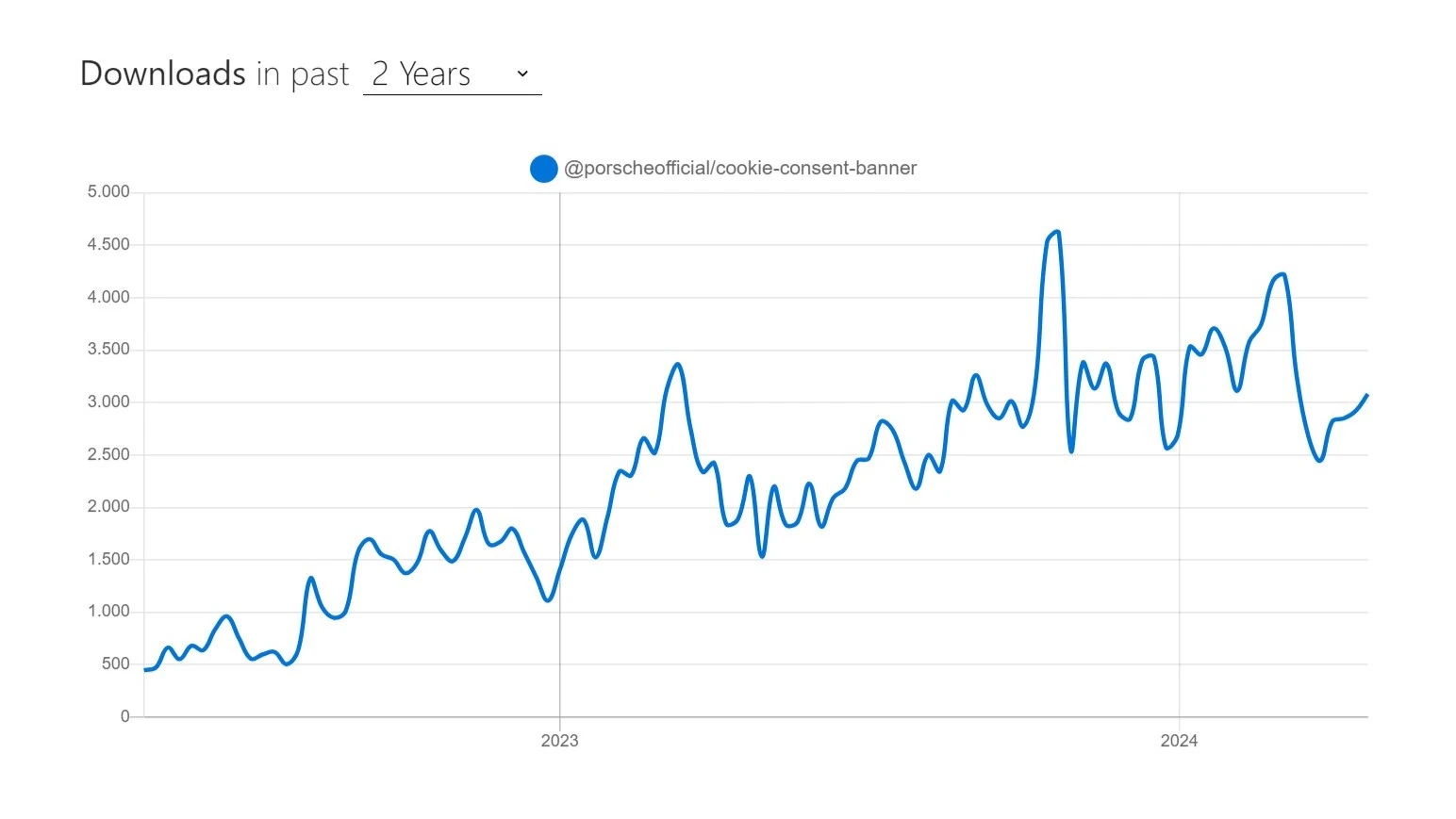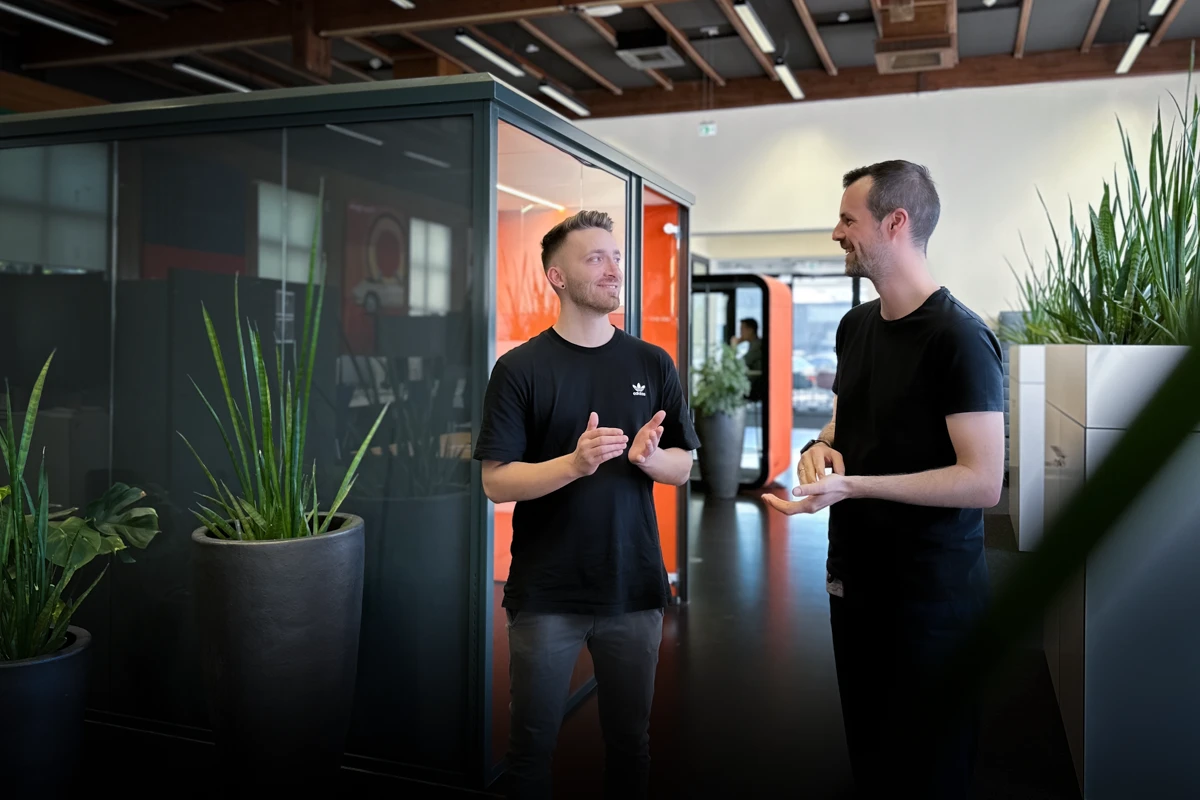FOSS@Porsche · 2024
Cookie Consent Banner
The Cookie Consent Banner is one of the very first FOSS projects published by Porsche back in 2021. In this Contributor Story, the two maintainers Tim and Patrick share what they have learnt over the past three years and how they managed to keep an eye on the needs of the community.
Tell us a little more about yourself, your role at Porsche and what topics drive you.
Tim (Web Developer Customer Innovation / Physical Products): I'm passionate
about enabling best-in-class user experiences for our products. To achieve
this, we all rely on software packages that must meet high quality
standards. It is therefore particularly important to me to be an active
member of the open-source world and to contribute our ambitious standards
back to the community.
Patrick (System Architect My Porsche): I'm a huge fan of a great user
experience. Not only for the end users of a product, but also for the software
engineers creating these. An awesome developer experience leads to an awesome
(end-) user experience. That's why I enjoy spending time into defining a
meaningful and scalable interface definition. The Cookie Consent Banner is such
an example. It's a component that you have to build for legal reasons and
probably doesn't change quite often after the initial implementation. It shouldn't
be complicated when you need to adapt it again after some time. The Cookie Consent
Banner is very flexible, yet still convenient to integrate.
You are currently maintaining Porsche's open-source project Cookie Consent Banner on GitHub. How would you explain your project in a nutshell? What problem does your project solve for Porsche?
Patrick: I'm sure everybody remembers the time when cookie banners first appeared on the
internet. It's not only cumbersome for the visitors of a website but also for
the maintainers to implement such a solution. So we created a component that is not
only informative to the visitors of a website, but also easy to integrate for
the product teams. It should be as straightforward as possible to integrate
third-party scripts and cookies into a website in a privacy-friendly manner,
always respecting the decision of the visitor. That's why the component doesn't
do any magical gatekeeping of such scripts, but instead making it very
convenient for the developer to get to know the information about the consent of
the visitor. The developers should have total control over what's happening on the
website and which scripts are being loaded.
Tim: In innovation projects, we work in a particularly agile manner and in
short development cycles. A cookie banner was therefore the perfect opportunity
to give something back to the community and at the same time create a building
block that enables innovation projects to build GDPR-compliant pages with
minimal effort.
With over 3000 weekly downloads your project already gained some adoption among the community. What did you learn along the way of maintaining an open-source project?
Patrick: The component should be easy to use, thus we need to ensure a
balance between sensible defaults and a potentially overwhelming set of
options to customize. Given the success of the component, I would say we
found a good balance. I really like the feedback the community provides via
GitHub Issues and Pull Requests. For example, one of the issues we had
was someone mentioning how the component was affecting their Google Lighthouse score.
Together, we found a solution, making the component performing better for
everybody. And while feature requests are always welcome, I'm hopeful to see
more direct contributions through Pull Requests in the future. It's this
kind of active collaboration that brings out the best in open-source
projects.
Tim: Apart from the question of finding the right level of customization
options, the biggest challenge for me in this project is the variety of
different contexts in which the component is used: There is a very wide range of
different browsers we need to support but also, we decided to make the component
available as a React component. This is only possible using extensive testing in
different environments and with the help of standards such as the Web Component
standard and tools like Stencil. This illustrates the importance of these
projects in the overall FOSS context, as we rely on open source to build open
source.
It's great to see how the Cookie Consent Banner was able to attract a decent community around the project. Are there specific reasons why you decided to publish this component under a FOSS license?
Contributing is never a zero-sum game. The return is always greater than the
resources invested. People often only see that it requires additional effort to
create a software component in a way that makes it also usable for other
products as well. That is only half the truth. If multiple teams develop the
same software component, the whole company invests twice the required resources.
Additionally, an active open-source community provides a huge amount of
knowledge that is hard to replicate within a closed environment. For instance, a
developer reported an issue with the Cookie Consent Banner for a specific
browser version. We only learned about that because of the community. And yes,
there's always the argument that publishing something as open source will also
help competitors. Well, that's true, but let's be honest, a great cookie consent
banner will not make a dramatic difference. It's a base component that every
product needs to provide. I'm not asking to share software components that could
be described as the “secret sauce”.